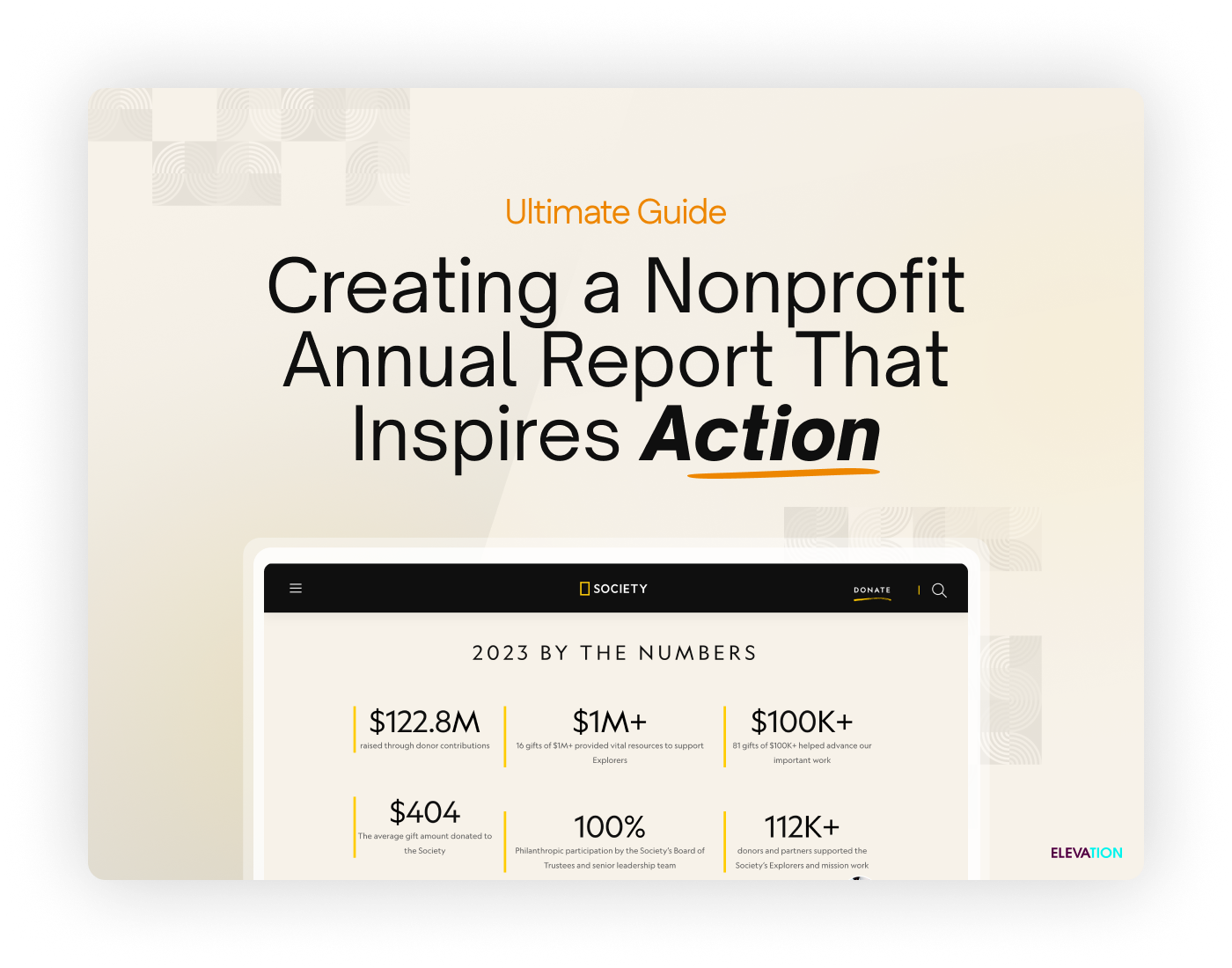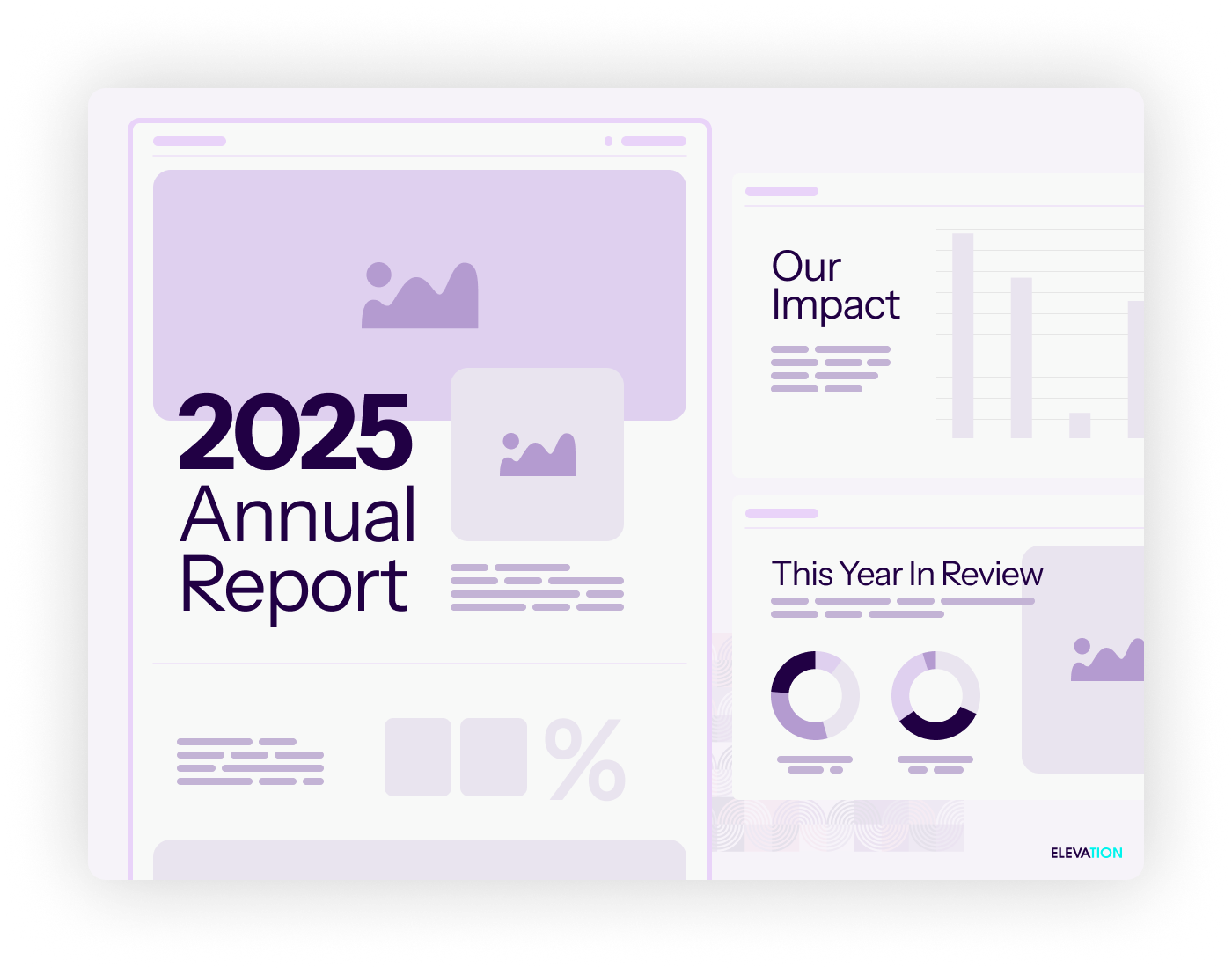The world is changing rapidly, and the way donors support their favorite charities is changing, too. While some donors still like to send in checks to their favorite nonprofits, many are turning to more technologically advanced ways to give to charitable organizations.
How is your nonprofit responding to this change? Even though you should still be asking for donations in a variety of different ways, the fact is that your nonprofit’s website should be a one-stop-shop for donors who want to learn more about your organization, connect emotionally with your mission, and give to your cause.
Take a look at these top five tips to help your nonprofit collect more donations on your website.
And don’t forget to check out these additional tips on how to increase online donations!
1. Create a unique donation form.
You won’t be able to generate revenue from your website if you don’t give donors a way to contribute. And you won’t be able to generate good revenue if your contribution page doesn’t make the donation process easy.
The best donation pages have the following characteristics:
- They are simple. Don’t distract your donors with links that will lead them away from your donation form.
- They make giving easy. Donors don’t want to fill out more fields than they have to. Make giving easy for your supporters.
- They offer opportunities for further engagement. Your donors aren’t ATMs. Give them ways to interact with your nonprofit beyond contributing on your donation form.
- They are secure. Donors won’t want to give if they think their personal information might be compromised. Reassure them by placing appropriate security certification on your donation form.
- They thank donors. Gratitude is crucial for maintaining a solid relationship with your donors. Make sure that once they click “Submit,” the next page thanks them for their donation.
2. Update your website.
40% of users will abandon a website if it takes too long to load. Is your nonprofit’s site turning away donors because it’s too slow?
If so, it may be time to give your website a facelift!
A streamlined website with cohesive pages and navigation will help give your donors a more user-friendly experience, a crucial component in the overall online donation process. Keeping images and other elements simple and impactful will prevent slow load times, reinforce a donor’s decision to give, and keep them from getting distracted.
Make sure that donors can easily access your donation form from any page on your website. If they find themselves reading a success story buried in the archives of your blog and feel inspired to donate to your cause, they shouldn’t have to press the back button on their browser 70 times to get to the “Ways to Give” page.
Include a “Donate Now” button on every page (if you can) and make sure that donors can quickly find your donation form.
There’s nothing worse than missing out on a donation because your website wasn’t easy to use. For more tips about asking for donations, check out this handy guide that Qgiv put together!
3. Make sure that your donation page is optimized for mobile giving.
In our increasingly fast-paced and tech-focused society, donors crave the convenience of donating on the go. Whether they want to support your advocacy campaign or they want to give to a crowdfunding initiative on their smartphone, your biggest supporters want to know that they can give wherever they want and whenever they want.
The easiest way for your nonprofit to respond to this growing trend is to create mobile responsive donation pages.
Making your donation pages mobile responsive means that they are able to be viewed on smartphones and tablets as well as desktops and laptops. This way, your donors can give even when they aren’t looking at your website on a traditional computer.
4. Combine offline and online fundraising techniques.
Just because your nonprofit wants to start driving more traffic to your website and receive more donations online doesn’t mean you should forsake and abandon your traditional offline techniques.
Imagine your church is trying to raise money for a new sanctuary. Let’s look at some of the different ways you could combine offline and online fundraising tactics:
- Host a fundraising event like a marathon, gala, or family fun day and encourage attendees to check out your website and online donation form.
- Promote your online donation form and emphasize its mobile responsiveness on your flyers and pamphlets. People still enjoy reading tangible materials from nonprofits, but you can use the medium to drive more traffic to your website and online donation form.
- If you’re hosting a capital campaign, promote text-to-give and your online donation form to attendees at your kickoff event. This way, members of the general public will know how to give to your nonprofit wherever they are!
Offline and online fundraising techniques are not (and should not be!) mutually exclusive. When paired correctly, the two can be a dynamic duo that brings in more donations for your nonprofit’s project or mission.
5. Promote your website on social media.
Nearly everyone and their grandmother is on at least one social media site these days. Whether they’re posting, liking, favoriting, retweeting, or snapping, everyone from pre-teens to baby boomers connects with their friends, family members, and yes, even nonprofits, on social media.
What is your nonprofit doing to harness the enormous potential of social media?
Social media can be a powerful tool for driving traffic to your nonprofit’s website and, ideally, your donation page.
Let’s look at how you can use some of the most popular sites to help your organization bring in more donations:
- Facebook: With around a billion active users (yes, that’s billion with a B), Facebook is without a doubt the largest social network in the world. If your nonprofit has a Facebook page, use this large audience to your advantage! Post regular updates and encourage people to like your page. Make sure that you also provide users with a way to get to your website and donation form.
- Twitter: Even though you’ll be limited to only 140 characters, your nonprofit can still use Twitter as a way to drive donors to your website. Keep your tweets to the point and let donors know how they can give. Don’t forget the link to your website!
- Instagram: Instagram is an image-based social media site, making it the perfect platform to share success stories and updates on specific projects. Include a link in your description and let your followers know how they can give to your organization.
The key to using social media as a tool to drive traffic to your nonprofit’s website is to make the content shareable. This means:
- Including eye-catching graphics and pictures.
- Directly interacting with followers and donors.
- Keeping a personal tone.
- Posting regular content.
- Varying your posts and updates (don’t just ask for donations all the time!).
Social media is a great way to stay connected with your donors and encourage them to continue to donate via your website’s donation form.
Your nonprofit website wears a lot of hats. It serves as a source for updates, news, and other stories. It acts as a way for donors and prospects to interact and get in touch with your nonprofit. Follow these five tips for driving more donations, and your website can also raise your nonprofit’s operating budget to new heights!



